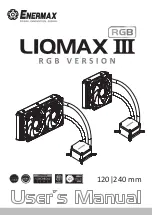
Planning a Deployment
Feature Pack Deployment Guide
22
Remotely Storing Files from an Active/Active Exchange Cluster
The Feature Pack supports one active/active Exchange cluster, as shown in Figure 1.7. In the
supported configuration, both Exchange servers in the cluster are active and access the Windows
Storage Server computer at the same time. If one of the cluster nodes fails, the storage group
operations of the failed node are handled by the other node, thereby preventing loss of service.
A dedicated Gigabit Ethernet connection is recommended between each Exchange 2003 server
and the Windows Storage Server computer. A dedicated Gigabit Ethernet connection is either a
direct point-to-point connection, or is implemented through a switch that supports virtual LANs
(VLANs). A separate connection to the public network is required for access to Active Directory
and, optionally, to provide client access for general-purpose file sharing.
Figure 1.7 Topology with One 2-Node Active/Active Exchange Server Cluster
Planning for Security
Moving Exchange databases and transaction logs to a Windows Storage Server computer
requires the Exchange server to access its data over a network connection. It is therefore
important to verify the security of that connection. A dedicated Gigabit network for Exchange
traffic is strongly recommended to help prevent network sniffing of Exchange data.
Additionally, the Server Message Block (SMB) share used to host the Exchange databases and
transaction logs on the Windows Storage Server computer must be locked down to ensure data
security. Limiting access to this share to the minimum number of administrators, backup
operators, and Exchange servers required is strongly recommended.
Important
SMB shares that are created using the Win32 user interface grant
Read permissions to the Everyone group by default. To ensure data
security, this permission setting must be removed on shares that are
used to host the Exchange databases and transaction logs.
For additional information about Exchange server security requirements, see “Planning an
Exchange Server 2003 Messaging System” (
http://go.microsoft.com/fwlink/?LinkId=23131
).
Summary of Contents for PowerVault 770N
Page 6: ...Contents Feature Pack Deployment Guide 6 ...
Page 10: ...Introduction Feature Pack Deployment Guide 10 ...
Page 36: ...Installing the Feature Pack Feature Pack Deployment Guide 36 ...
Page 56: ...Applications and Exchange Tools Feature Pack Deployment Guide 56 ...
Page 62: ...Feature Pack Deployment Guide 62 ...
Page 70: ...Detailed Report Log File Feature Pack Deployment Guide 70 ...















































